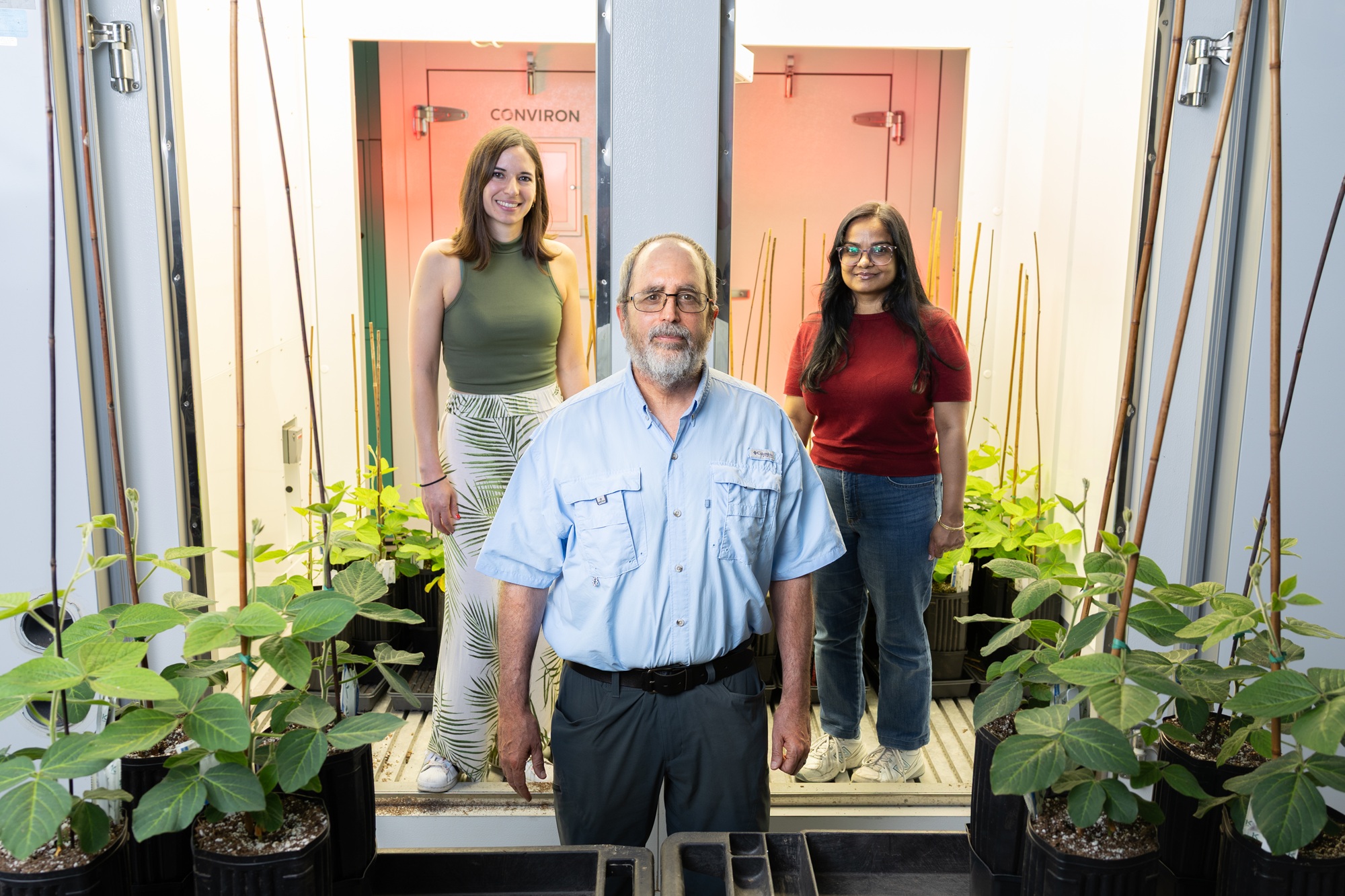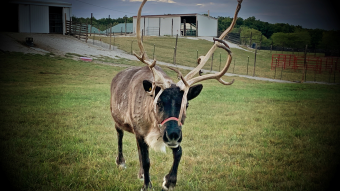By Eric Stann

July 23, 2025
Contact: Eric Stann, StannE@missouri.edu
Photos by Nicholas Benner
It’s a hot, dry summer afternoon, and the skies offer no relief for a field of soybeans. But within those green leaves, these plants are quietly fighting back.
Researchers at the University of Missouri recently discovered that soybeans have a natural defense strategy — called differential transpiration — that helps protect the plant’s reproductive tissues (flowers and seed pods) during extreme weather conditions.
Think of it as nature’s version of targeted air conditioning.
“Soybeans keep their stomata — tiny pores used for plant breathing and cooling by evaporation — open on their flowers and pods to allow for transpirational cooling while simultaneously closing the stomata on their leaves,” Ron Mittler, a Curators’ Distinguished Professor of Plant Science and Technology in the College of Agriculture, Food and Natural Resources, said. “By selectively cooling only the reproductive tissues and closing the stomata on the larger leaf area, these plants can save a substantial amount of water — upwards of 95 percent.”
This work underscores the importance of how plants respond to environmental stress at a physiological level. In the future, Mittler said understanding it could help guide the development of more resilient crop varieties through breeding and genetic engineering.
“This discovery opens the door to new strategies in crop improvement,” said Mittler, who is also a principal investigator in the Christopher S. Bond Life Sciences Center. “If we can enhance differential transpiration through genetic engineering or breeding — for instance, by increasing stomatal density on reproductive tissues — we may be able to develop crops that are better equipped to handle tough weather conditions.”
“Differential transpiration occurs in soybean under a wide range of water deficit and heat stress combination conditions,” was published in the journal Physiologia Plantarum. Co-authors are Ranjita Sinha, María Ángeles Peláez-Vico and Felix B. Fritschi at Mizzou. The group previously published their initial discovery of differential transpiration in the journals New Phytologist and Plant Physiology.
This research was supported by two grants from the National Science Foundation.





